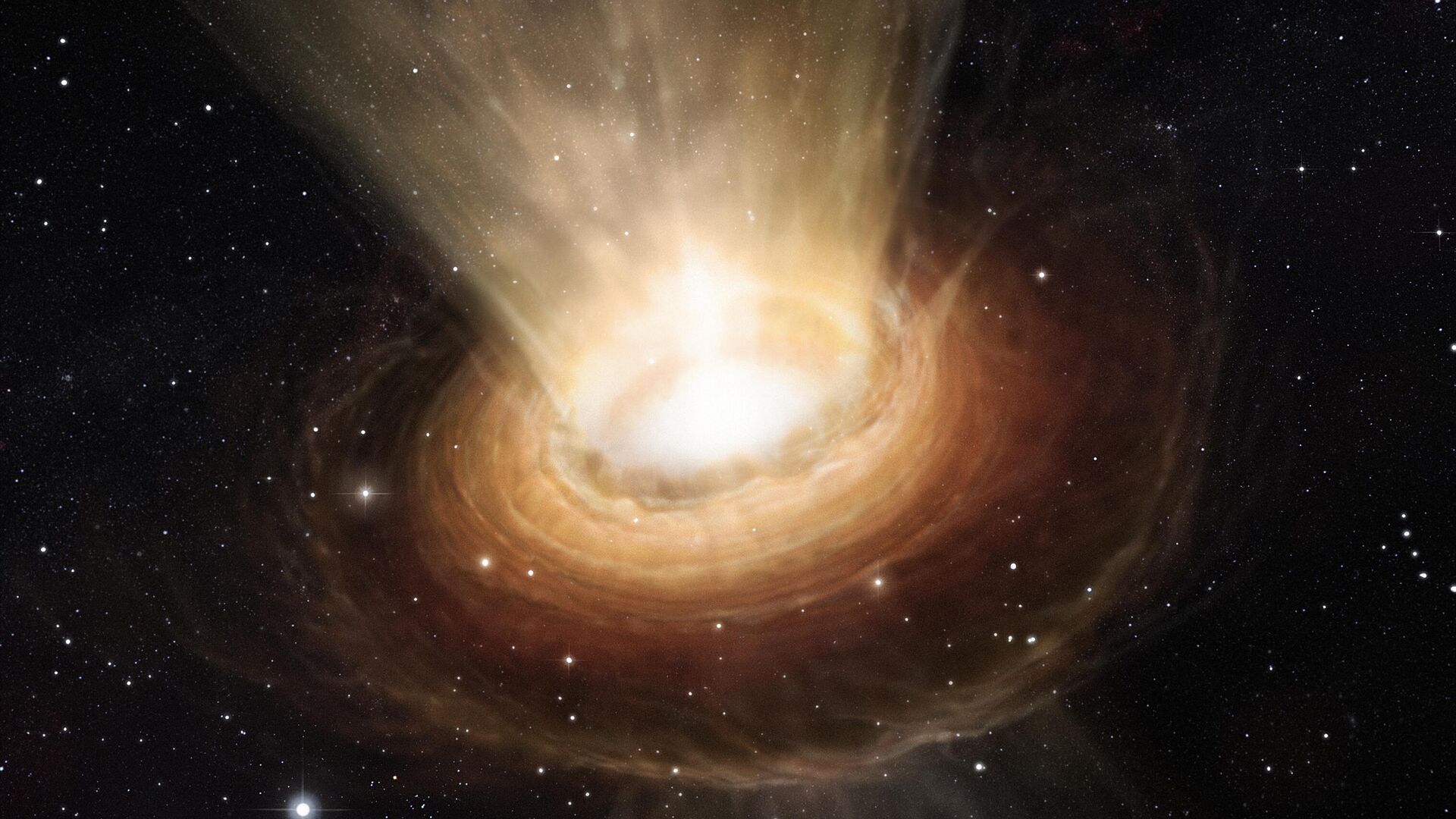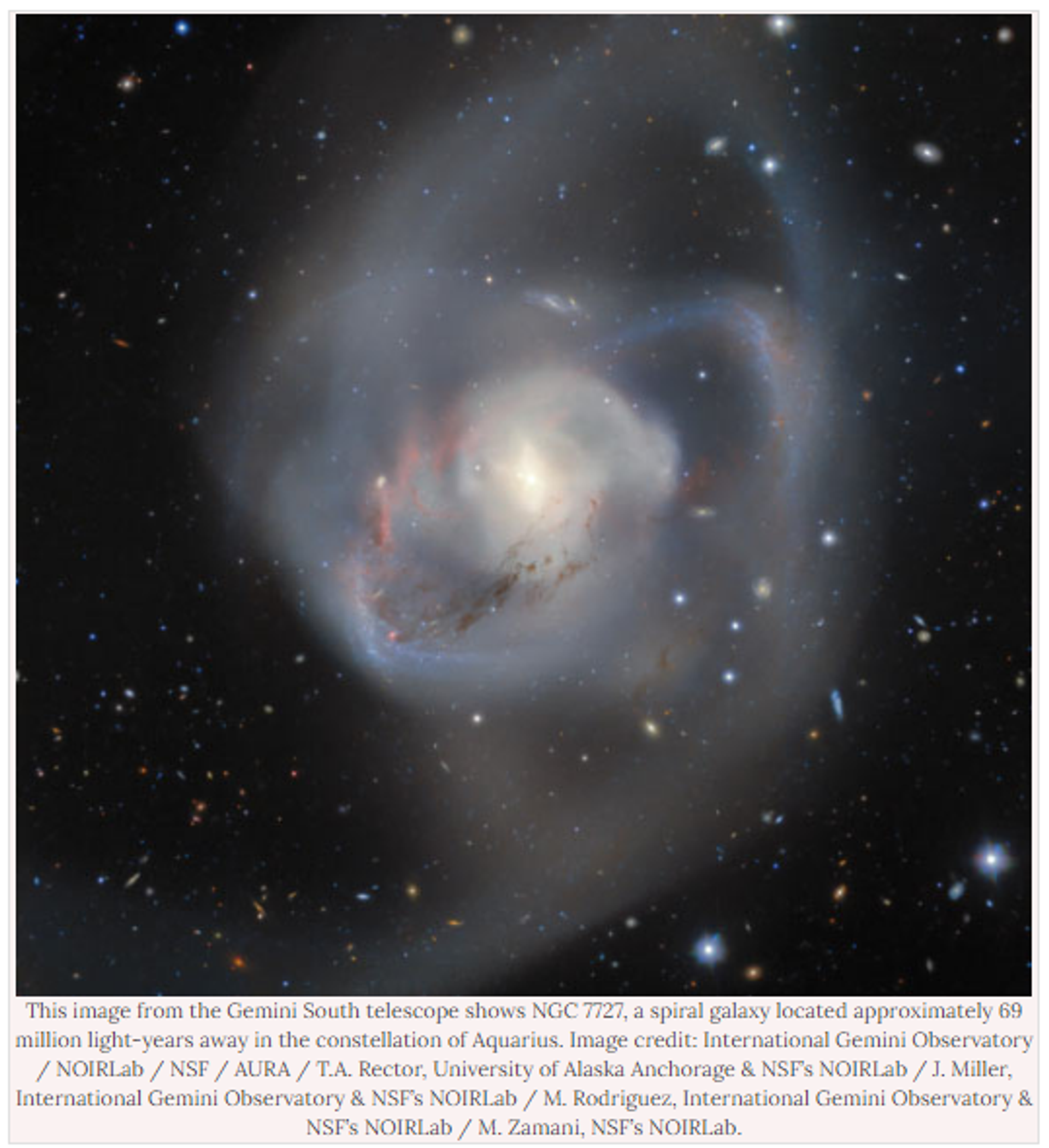Two Supermassive Black Holes Close to Earth Formed After Galaxies Collision: Study
17:40 28.10.2023 (Updated: 19:04 28.10.2023)

© AFP 2024 M. KORNMESSER
Subscribe
NGC 7727 is a spiral galaxy in Aquarius, was discovered in 1785 by William Herschel. Its monstrous black hole duo, which is expected to merge in the future, has long eluded any detection.
Two supermassive black holes close to our planet Earth were formed after a dramatic collision of two galaxies approximately a billion years ago, scientists assert, as they have released exciting new images of the pair.
The black hole binary at a distance of some 90 million light-years away from Earth was discovered by a team of astronomers. They had been scrutinizing the galaxy merger designated as NGC 7727 using the Gemini South telescope perched on Cerro Pachon mountain in the Chilean Andes.
It should be noted that there is a specific reason why NGC 7727 (also known as LEDA 72060) attracts the attention of astronomers. They believe that the spiral galaxy has the potential of shedding light on the fallout from the collision of our home galaxy, the Milky Way, with the neighboring spiral galaxy Andromeda . This is on track to happen sometime in around 4.5 billion years. Furthermore, scientists are thrilled because this pair of supermassive black holes is the closest to our planet.

Screenshot of image from the Gemini South telescope showing NGC 7727, a spiral galaxy some 69 million light-years away in the constellation of Aquarius.
The image of the spiral galaxy was captured thanks to the Gemini Multi-Object Spectrograph (GMOS) on the Gemini South telescope. It shows swirling interstellar dust and gas "resembling freshly-spun cotton candy as they wrap around the merging cores of the progenitor galaxies," as per a statement by NOIRLab astronomers.
"From the aftermath has emerged a scattered mix of active starburst regions and sedentary dust lanes encircling the system. It is estimated that the two will eventually merge into one in about 250 million years to form an even more massive black hole while dispersing violent ripples of gravitational waves across spacetime," the team said.
Alluding yet again to why studies of the NGC 7727 are important, the astronomers concluded:
'Similar to Messier 87, an elliptical galaxy with a supermassive black hole at its heart, this may be the fate of the Milky Way and the Andromeda Galaxy when they fuse together in billions of years' time."
